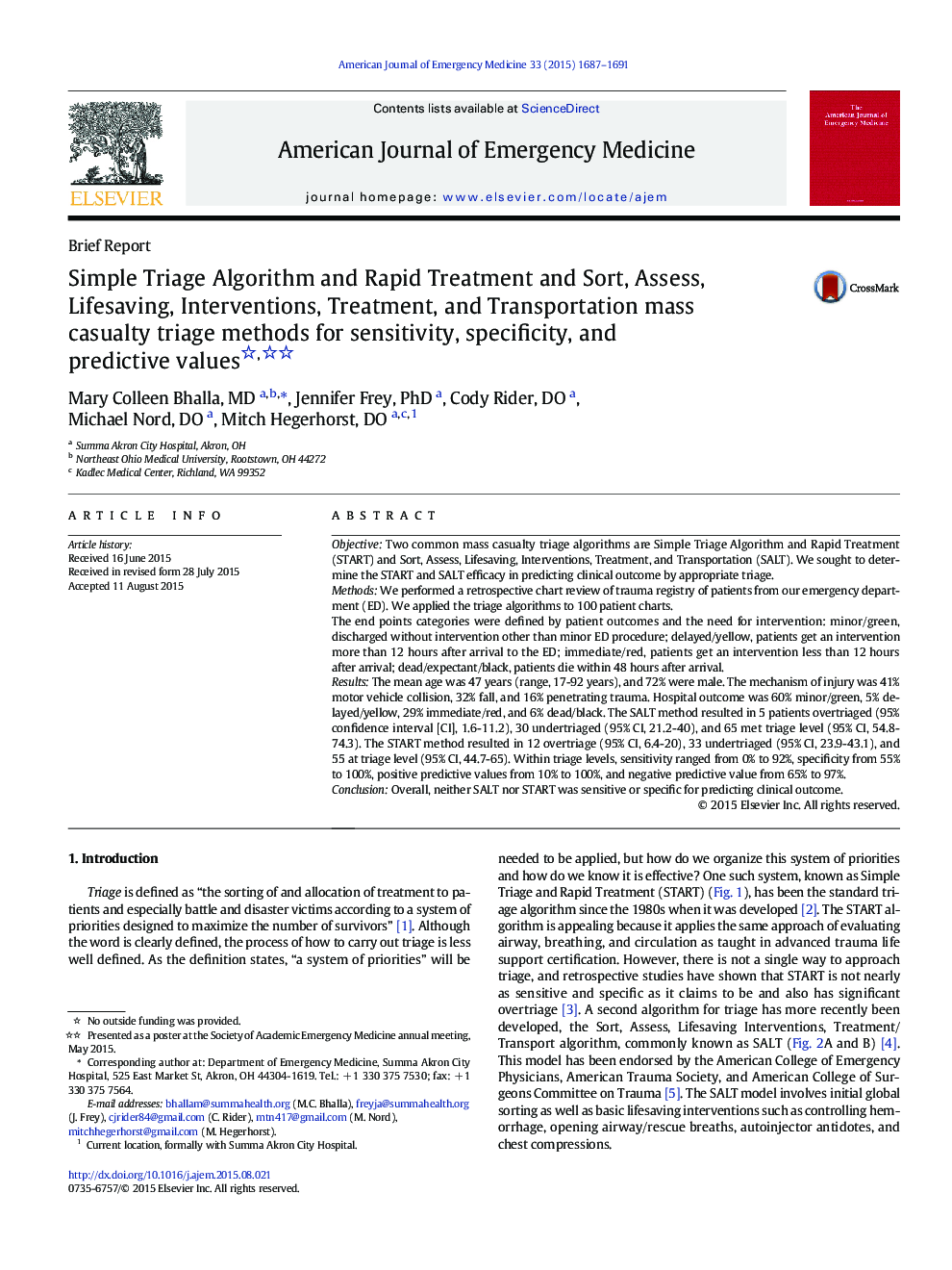| کد مقاله | کد نشریه | سال انتشار | مقاله انگلیسی | نسخه تمام متن |
|---|---|---|---|---|
| 3223663 | 1588100 | 2015 | 5 صفحه PDF | دانلود رایگان |
ObjectiveTwo common mass casualty triage algorithms are Simple Triage Algorithm and Rapid Treatment (START) and Sort, Assess, Lifesaving, Interventions, Treatment, and Transportation (SALT). We sought to determine the START and SALT efficacy in predicting clinical outcome by appropriate triage.MethodsWe performed a retrospective chart review of trauma registry of patients from our emergency department (ED). We applied the triage algorithms to 100 patient charts.The end points categories were defined by patient outcomes and the need for intervention: minor/green, discharged without intervention other than minor ED procedure; delayed/yellow, patients get an intervention more than 12 hours after arrival to the ED; immediate/red, patients get an intervention less than 12 hours after arrival; dead/expectant/black, patients die within 48 hours after arrival.ResultsThe mean age was 47 years (range, 17-92 years), and 72% were male. The mechanism of injury was 41% motor vehicle collision, 32% fall, and 16% penetrating trauma. Hospital outcome was 60% minor/green, 5% delayed/yellow, 29% immediate/red, and 6% dead/black. The SALT method resulted in 5 patients overtriaged (95% confidence interval [CI], 1.6-11.2), 30 undertriaged (95% CI, 21.2-40), and 65 met triage level (95% CI, 54.8-74.3). The START method resulted in 12 overtriage (95% CI, 6.4-20), 33 undertriaged (95% CI, 23.9-43.1), and 55 at triage level (95% CI, 44.7-65). Within triage levels, sensitivity ranged from 0% to 92%, specificity from 55% to 100%, positive predictive values from 10% to 100%, and negative predictive value from 65% to 97%.ConclusionOverall, neither SALT nor START was sensitive or specific for predicting clinical outcome.
Journal: The American Journal of Emergency Medicine - Volume 33, Issue 11, November 2015, Pages 1687–1691
